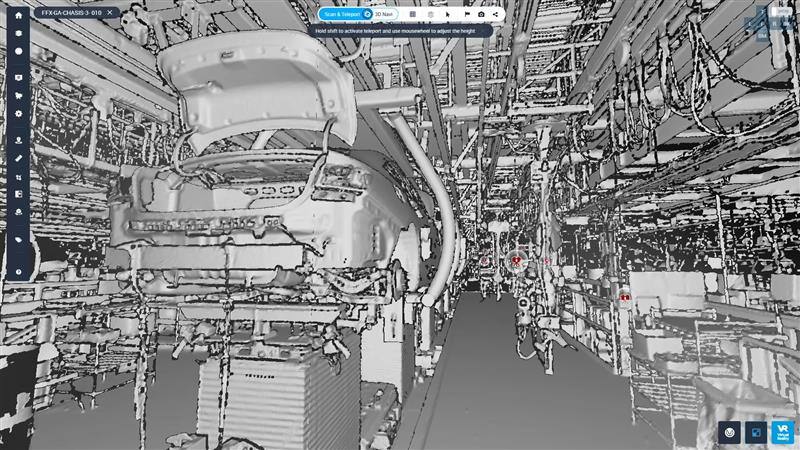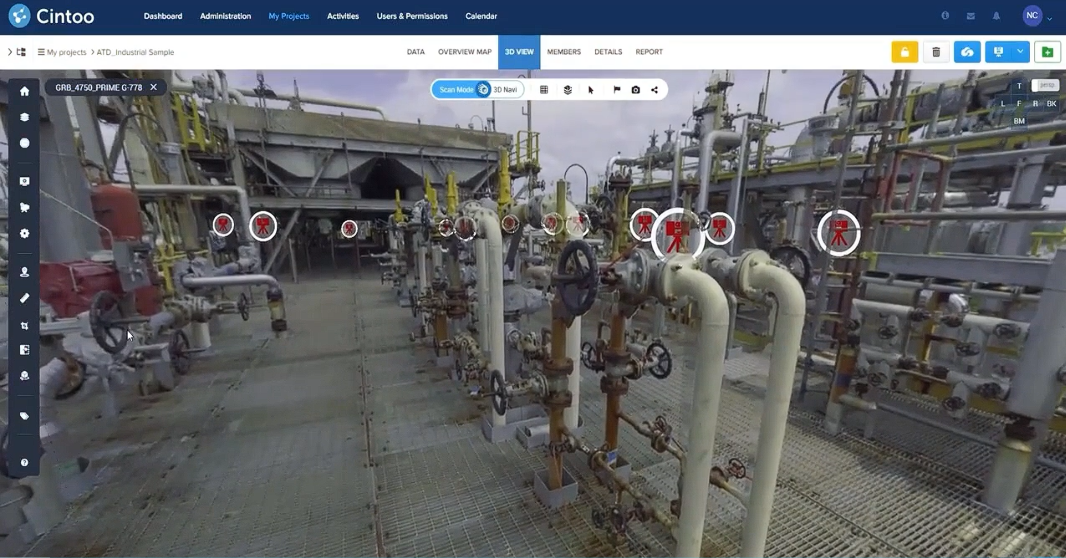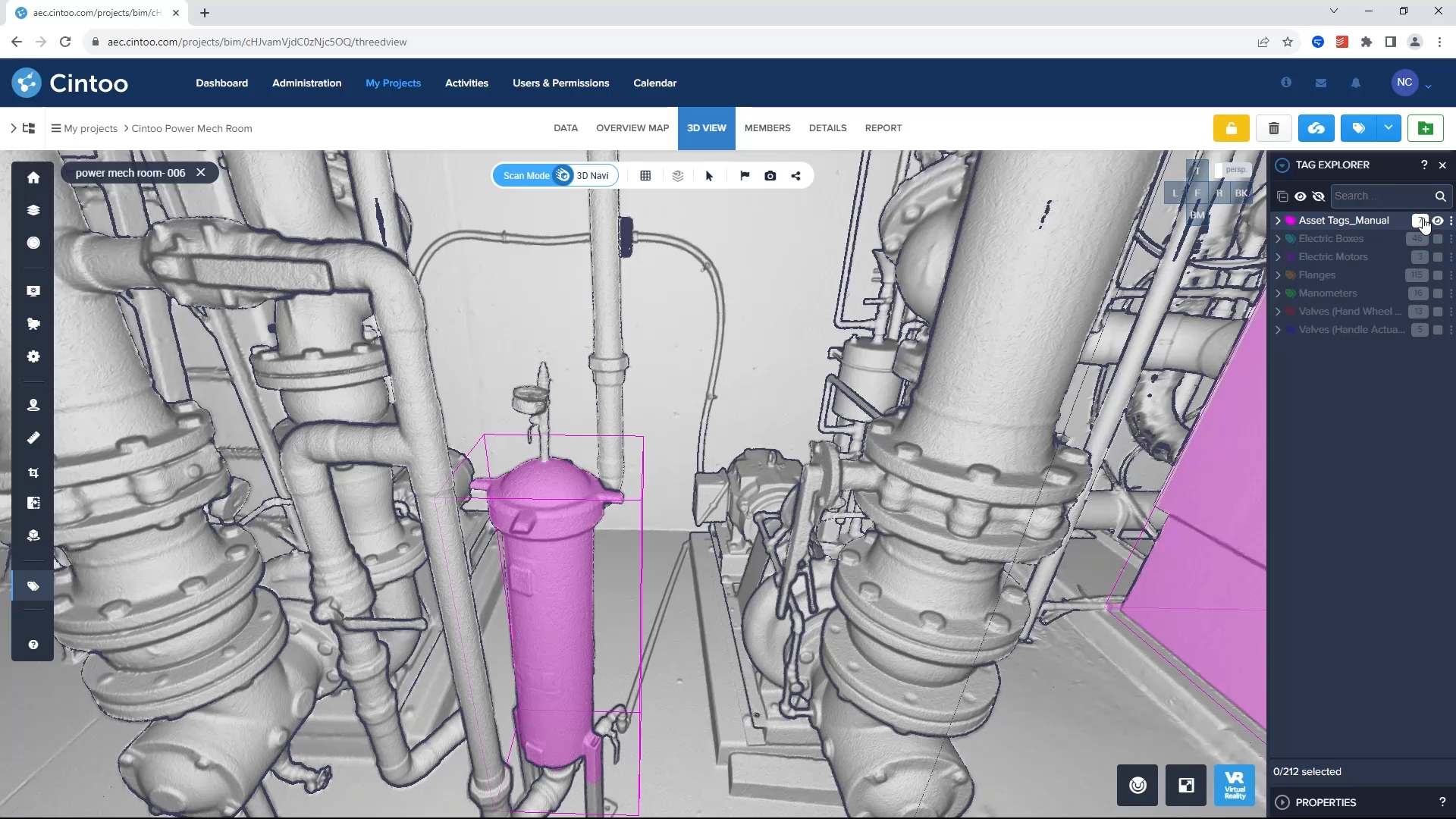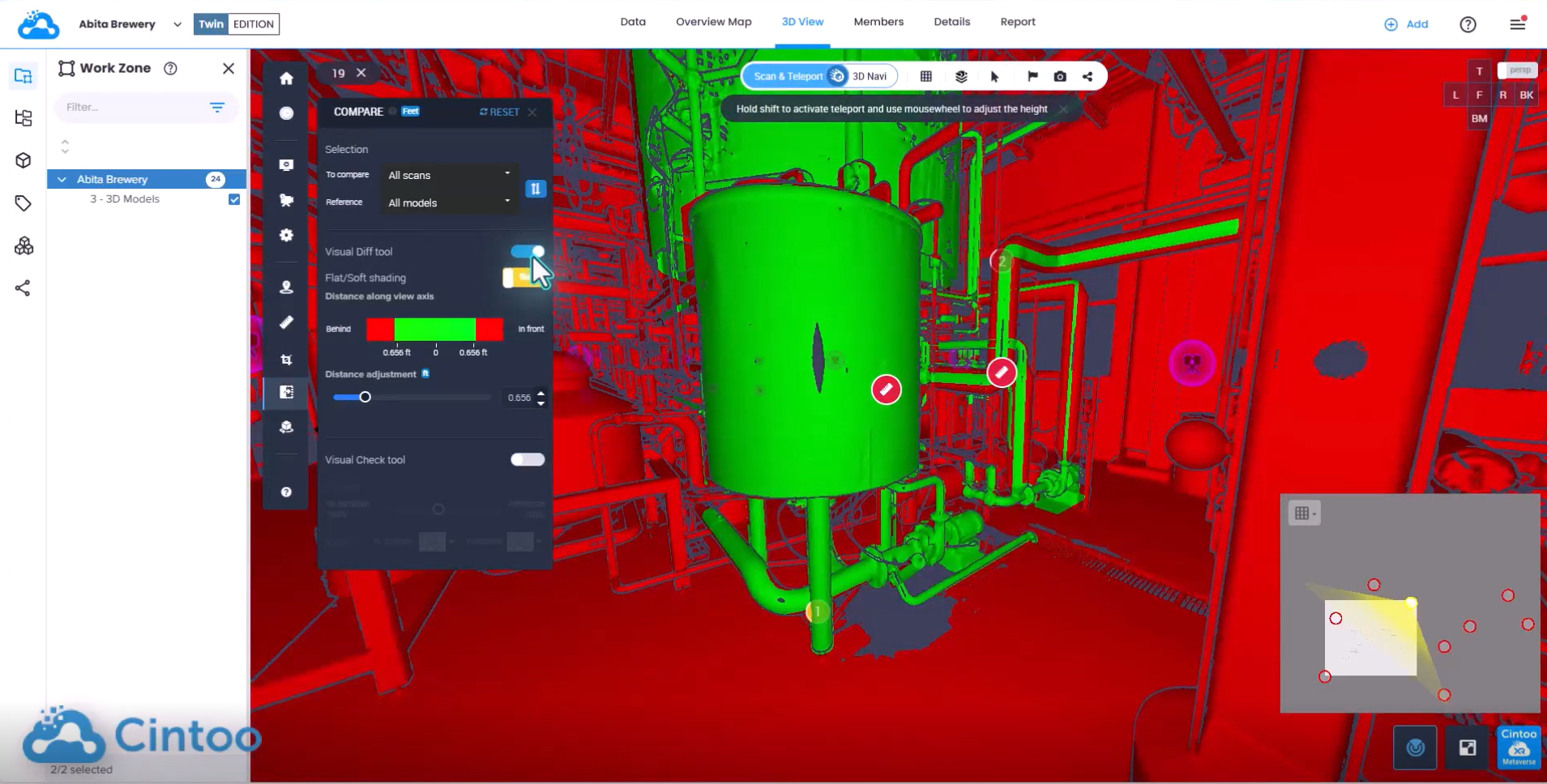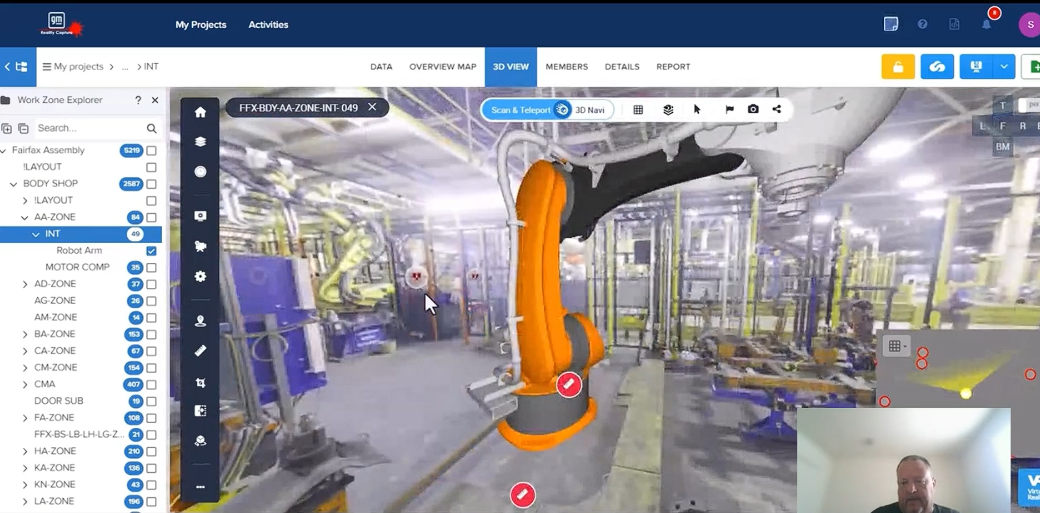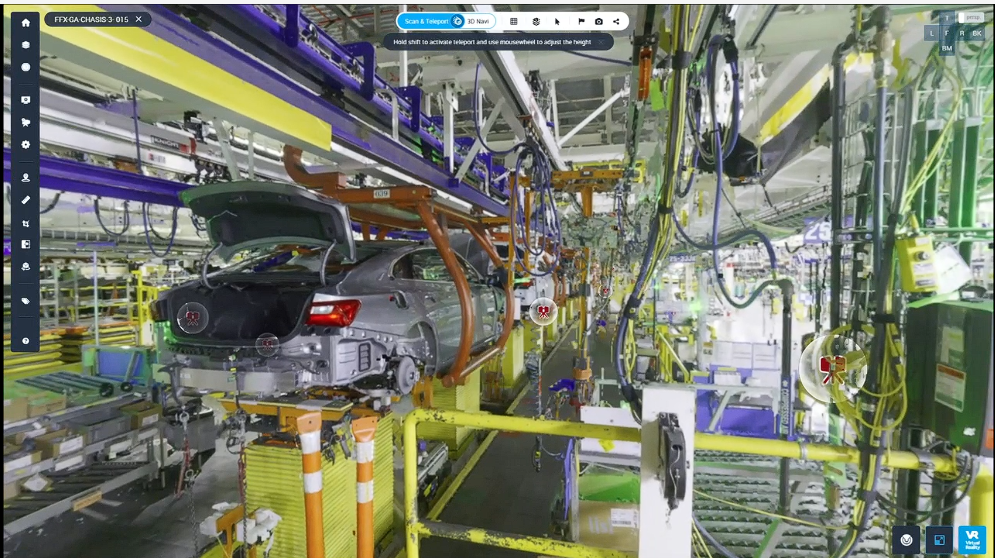Navigating Volatility with Visual Intelligence
Tariff uncertainty, shifting global supply chains, and rapid market changes are redefining the landscape of automotive manufacturing. For OEMs and Tier 1 suppliers alike, staying competitive means more than just reducing costs — it means building resilience into operations. That’s where 3D scan-driven resilience in automotive manufacturing comes into play.
As digital twin adoption accelerates, forward-thinking manufacturers are turning to scan-first solutions to increase manufacturing agility, reduce rework, and enhance collaboration across global teams. Using advanced reality capture for automotive and platforms like Cintoo, manufacturers can digitize legacy environments, retool production lines remotely, and act with clarity in the face of disruption.

From Model-First to Scan-First: A Shift in Strategy
Traditional factory planning software often relies on model-first approaches that are slow to implement and disconnected from real-world conditions. When change is urgent — whether due to tariffs, regulation, or customer demand — that delay can cost millions.
By contrast, a scan-first digital twin automotive workflow starts with high-resolution 3D scans of physical environments, including assembly lines. These scans provide the foundation for visual, measurable comparisons against design models, streamlining equipment installation, validation, collaboration, and decision-making.
In today’s volatile market, scan-to-BIM automotive alignment helps teams identify clashes, verify installations, and make real-time decisions — without waiting on redlines, site visits, or potential trade uncertainty.

A Case Study in Resilience: GM’s Global Digital Twin Strategy
General Motors (GM) has pioneered this approach by digitizing over 40 million square feet of manufacturing space across its global operations. Initially piloted in 2019 with a modest 300,000 square feet, GM’s scan-first infrastructure now spans Body, GA, Stamping, Paint, and Propulsion divisions.
Using Cintoo, GM has built a visual, cloud-based digital twin of its facilities, empowering global engineering, operations, and supplier teams to access and collaborate on scan data from anywhere. This global scan-first strategy has created a new standard for automotive digital transformation.
Notably, GM uses scan-first data to reduce field orders and field checks in brownfield environments. By scanning new automation lines at supplier sites and virtually overlaying them into existing production lines, teams can simulate integration before physical deployment. This de-risks retooling projects, minimizes plant disruption, and reduces the need for in-person coordination.
Visual Collaboration Across Global Supply Chains
As automakers balance cost-saving goals with growing complexity, the ability to coordinate across dispersed teams is vital. With Cintoo’s cloud-native platform, OEMs like GM are enabling global supply chain collaboration without the friction of manual file-sharing or inconsistent data formats.
Cintoo provides a visual data management layer where teams across continents — from design engineers to plant planners — can work from the same source of truth. Interactive tools like annotations, comparison reports, and clash detection ensure that every stakeholder sees the same context, whether they’re in North America or Asia.
This has proven critical in workflows such as:
-
Remote commissioning and layout reviews
-
Supplier-side automation modeling
-
Change validation in brownfield facilities
-
Cross-site QA and maintenance planning
These points and more highlight the growing implication of virtual tools for building tariff resilience. When these actions can be facilitated remotely, it saves the manufacturer money from reduced site visits and increased accuracy since teams work around the same visual source of truth.

Building the Resilient Factory of the Future
Resilience isn’t just about bouncing back — it’s about building systems that adapt quickly to whatever comes next. That’s why the factory of the future is rooted in automotive digital twin strategies that start with scan data.
With Cintoo, manufacturers can ingest and organize massive amounts of laser scan data, run comparisons against BIM or CAD models, and keep all project stakeholders aligned via the cloud. Whether retooling a line for EV production or conducting virtual field checks across borders, this system reduces overhead and increases clarity.
Key toolsets in Cintoo’s platform include:
-
Asset tagging: Connect real-world equipment to metadata, spec sheets, and usage history.
-
AI classification: Automatically identify and label common object types within scans.
-
Crop-in/Crop-out: Isolate specific work zones or systems for targeted analysis.
-
Power BI integration: Visualize performance data alongside spatial conditions.
Sustainability, Compliance, and Cost Avoidance
With increasing scrutiny on carbon footprints and energy usage, automotive OEMs are also leveraging 3D scan-driven digital twins to align facility changes with sustainability goals.
Moreover, linking scanned assets to external databases gives teams insight into energy consumption, lifecycle costs, and reuse opportunities. One use case in propulsion systems involved scanning aged-out equipment, tagging it with lifecycle data, and repurposing usable machines across other sites — saving both capital and time.
This kind of cost avoidance, enabled by visual data, is quickly becoming a strategic differentiator for automotive manufacturers looking to make themselves more resilient in uncertain times.
Virtual Training and Workforce Enablement
In a time when skilled labor shortages and global workshare models are evolving, manufacturers must enable remote teams with the tools to succeed. Automotive manufacturers use Cintoo to deliver virtual training environments, allowing international teams (like those in India) to view recorded maintenance videos overlaid with 3D scan environments.
Rather than relying on PDFs or static images, teams can immerse themselves in accurate, up-to-date spatial contexts — enabling better knowledge transfer, fewer errors, and faster onboarding.
This approach bridges the gap between physical operations and digital infrastructure, making factories more adaptable and scalable for the next generation of automotive manufacturing.
Quantifying ROI and Reducing Risk
While the operational advantages of scan-first digital twins are compelling, the business case is just as strong. Manufacturers using Cintoo report:
-
Up to 50% reduction in rework through better visualization and validation.
-
Faster turnaround on factory updates and new line installations.
-
Huge cost-savings in reduced travel, shipping, and physical trial setups.
-
Enhanced safety with fewer people needing to enter active job sites.
-
A central hub of truth for compliance, audit preparation, and sustainability tracking.
Conclusion: The Visual Edge in a Volatile World
In an industry where every second counts and every disruption costs, 3D scan-driven resilience in automotive manufacturing is more than a buzzword — it’s a strategic imperative.
Cintoo’s platform enables manufacturers to digitize reality, drive agility, and unlock ROI in ways that were previously impossible. As tariffs shift, supply chains evolve, and digital expectations rise, scan-first digital twins provide the clarity and control automotive leaders need to stay ahead.
Now is the time to move beyond CAD alone. The real factory of the future, and one that is tariff-proof, is the one you can see, measure, and manage all within the virtual setting. Build agility today by trying a free demo.

